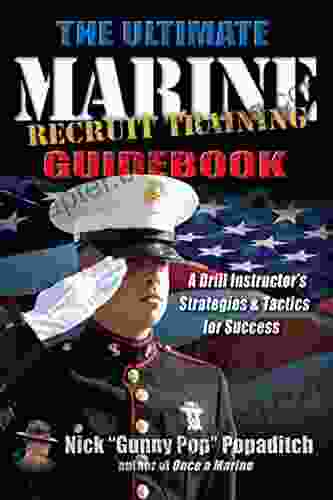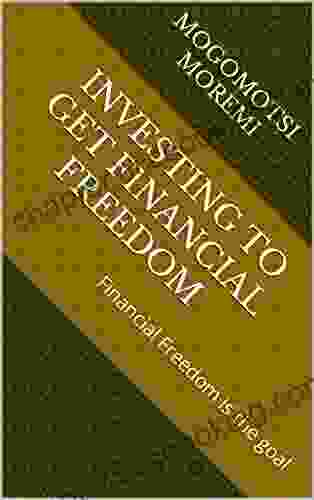Investing To Get Financial Freedom

Welcome to the world of investing, where dreams of financial freedom and independence become attainable. Investing empowers you to take control of your financial future, break free from the constraints of traditional income streams, and create a life where you live on your own terms. This comprehensive guide to investing will serve as your roadmap on this remarkable journey. 4.6 out of 5 Financial freedom is not a distant dream but a reality you can create with the right knowledge and strategies. Through investing, you can build wealth that grows over time, providing you with a steady stream of passive income and the freedom to pursue your passions, travel the world, or simply enjoy the peace of mind that comes with financial security. Investing may seem like a daunting task, but it doesn't have to be. By starting small and gradually increasing your knowledge and experience, you can become a confident and successful investor. Our guide will equip you with the fundamentals of investing, including: We will also provide practical tips and real-world examples to help you put these principles into action. Whether you are a beginner or have some experience with investing, this guide will empower you to take your financial future into your own hands. The first step to building a successful investment portfolio is understanding the different asset classes available. Each asset class has its own characteristics, risks, and return potential. By diversifying your investments across multiple asset classes, you can reduce risk and enhance your overall returns. Once you understand the different asset classes, the next step is to create a balanced investment portfolio that meets your individual needs and investment goals. A balanced portfolio should diversify your investments across multiple asset classes, reducing risk and enhancing your overall returns. All investments carry some degree of risk. However, you can manage risk and volatility by understanding different types of investment risks and implementing effective risk management strategies. Unlock Your Financial Potential: A Journey to Financial Freedom
Language : English File size : 1577 KB Text-to-Speech : Enabled Screen Reader : Supported Enhanced typesetting : Enabled Word Wise : Enabled Print length : 75 pages Embarking on the Path to Financial Independence
Understanding Different Asset Classes
1. Stocks
2. Bonds
3. Real Estate
4. Commodities
Creating a Balanced Investment Portfolio
1. Determine Your Investment Goals and Risk Tolerance
2. Diversify Your Portfolio
3. Rebalance Your Portfolio Regularly
Managing Risk and Volatility
4.6 out of 5
| Language | : | English |
| File size | : | 1577 KB |
| Text-to-Speech | : | Enabled |
| Screen Reader | : | Supported |
| Enhanced typesetting | : | Enabled |
| Word Wise | : | Enabled |
| Print length | : | 75 pages |
Do you want to contribute by writing guest posts on this blog?
Please contact us and send us a resume of previous articles that you have written.
 Book
Book Novel
Novel Page
Page Chapter
Chapter Text
Text Story
Story Genre
Genre Reader
Reader Library
Library Paperback
Paperback E-book
E-book Magazine
Magazine Newspaper
Newspaper Paragraph
Paragraph Sentence
Sentence Bookmark
Bookmark Shelf
Shelf Glossary
Glossary Bibliography
Bibliography Foreword
Foreword Preface
Preface Synopsis
Synopsis Annotation
Annotation Footnote
Footnote Manuscript
Manuscript Scroll
Scroll Codex
Codex Tome
Tome Bestseller
Bestseller Classics
Classics Library card
Library card Narrative
Narrative Biography
Biography Autobiography
Autobiography Memoir
Memoir Reference
Reference Encyclopedia
Encyclopedia Michael Clark
Michael Clark Neil Peart
Neil Peart Nigel W M Warwick
Nigel W M Warwick Myojin Katou
Myojin Katou Michael Margolis
Michael Margolis Nathan Deuel
Nathan Deuel Mike Watt
Mike Watt Nick Heil
Nick Heil Michelle Campbell Scott
Michelle Campbell Scott Robert C Blattberg
Robert C Blattberg Natasha Campbell Mcbride
Natasha Campbell Mcbride Molly Mcclain
Molly Mcclain Melvin Baker
Melvin Baker Margaret C Collier
Margaret C Collier Michael Robinson
Michael Robinson Mike Malaska
Mike Malaska Nick Morrison
Nick Morrison Neal Karlen
Neal Karlen Nadine Mackenzie
Nadine Mackenzie Tyler Richards
Tyler Richards
Light bulbAdvertise smarter! Our strategic ad space ensures maximum exposure. Reserve your spot today!

 Heath PowellCulture, Power, and Practice: Unlocking the Transformative Potential of Human...
Heath PowellCulture, Power, and Practice: Unlocking the Transformative Potential of Human...
 Albert CamusUnveiling the Heartfelt Journey of Black Love: "Raising Fences: A Black Man's...
Albert CamusUnveiling the Heartfelt Journey of Black Love: "Raising Fences: A Black Man's...
 Guillermo BlairUnlock the Secrets of the Divine: Discover 'The Ruach Ha Kodesh Sinai The...
Guillermo BlairUnlock the Secrets of the Divine: Discover 'The Ruach Ha Kodesh Sinai The... Owen SimmonsFollow ·3k
Owen SimmonsFollow ·3k Bo CoxFollow ·11.7k
Bo CoxFollow ·11.7k Dan HendersonFollow ·5.3k
Dan HendersonFollow ·5.3k Aron CoxFollow ·8.8k
Aron CoxFollow ·8.8k Carter HayesFollow ·19.8k
Carter HayesFollow ·19.8k Harold PowellFollow ·12.3k
Harold PowellFollow ·12.3k Travis FosterFollow ·10.2k
Travis FosterFollow ·10.2k Edgar Allan PoeFollow ·18.4k
Edgar Allan PoeFollow ·18.4k

 Trevor Bell
Trevor BellUncover the Thrilling Mystery in "It Ain't Over, Cole...
Prepare yourself...

 Garrett Bell
Garrett BellHow to Stay True to Yourself and Stand Out From the Crowd
In a world that...

 Dennis Hayes
Dennis HayesDrill Instructor Strategies And Tactics For Success
Unleash Your Inner Warrior and Conquer...

 Guy Powell
Guy Powell101 Awesome Women Who Changed Our World: A Celebration of...
Throughout history,...

 Ashton Reed
Ashton ReedAn Iraq War Tank Commander's Inspirational Memoir of...
When he was just 19 years old, John Q....

 Dean Cox
Dean CoxLady Trader in the Transvaal: A Literary Safari through a...
Prologue: A Journey into the...
4.6 out of 5
| Language | : | English |
| File size | : | 1577 KB |
| Text-to-Speech | : | Enabled |
| Screen Reader | : | Supported |
| Enhanced typesetting | : | Enabled |
| Word Wise | : | Enabled |
| Print length | : | 75 pages |






